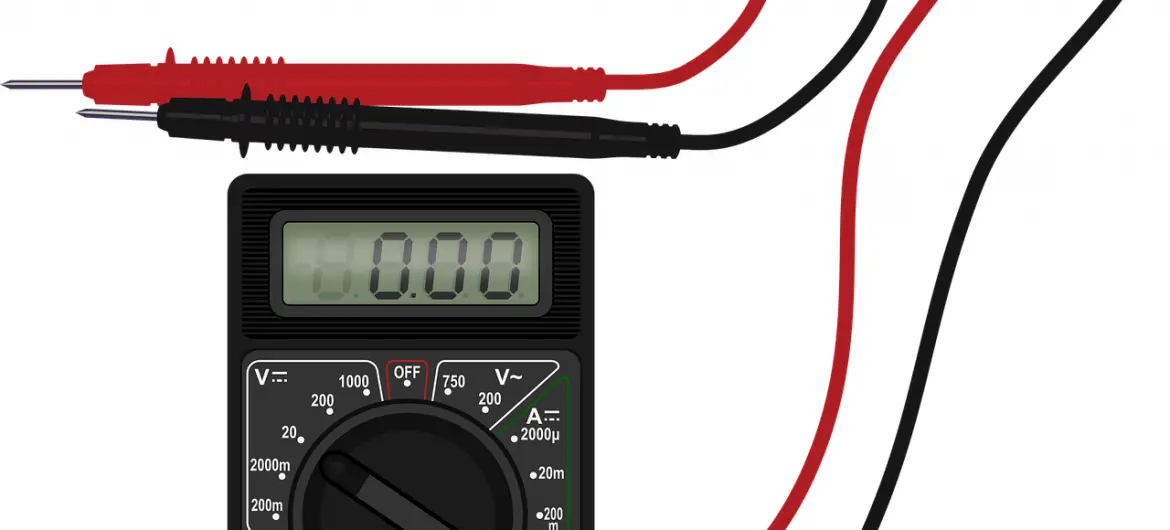The multimeter is a great tool used for testing circuits in electrical and electronic applications. It has the ability to measure voltage, current, and resistance.
Multimeter leads are an essential part of the multimeter when it comes to testing.
But, what are multimeter leads made of? Multimeter leads are made of a combination of wires, plugs, probes and insulation. In order to be able to measure current, voltage and resistance, the multimeter leads need to be made of conducting material that allows current to pass through. The material that is chosen for the wire is Copper, as it is a great conductor. Also, the wires are covered with an insulation material to protect you from the currents.
The ends of the leads can either be probes, alligator clips or banana plugs. These also need to be made of conducting material that can carry current.
Purpose of multimeter test leads
Problems are part of everyday life. There is no way of avoiding them. But, fortunately there are tools that we have developed to help us overcome these problems.
Electrical and Electronic applications are no different. Things rarely go as planned and you are inevitably going to come across problems and setbacks with your projects.
The multimeter is a troubleshooting instrument that was created to help identify problems in electrical and electronic systems.
The most basic multimeters are capable of measuring voltage, current and resistance. This is enough to help you identify many problems an electronic or electrical system could have.
An essential component of a multimeter are its leads.
Just like our hands are an essential part of our body, which let us feel and control the external world, multimeter leads are an important part of a multimeter that enable it to ‘feel’ and attach to circuitry for testing.
Sections of what multimeter leads are made of
Multimeter leads can be broken up into four sections; The Plug, Cable, Probe and Insulation.
The Plug
If we did not have a way to connect to a multimeter, it would be rendered useless. The multimeter has terminals which test leads can interface to.
Multimeter leads have a plug at the end (known as a banana plug) which is connected to one of the multimeter terminals.
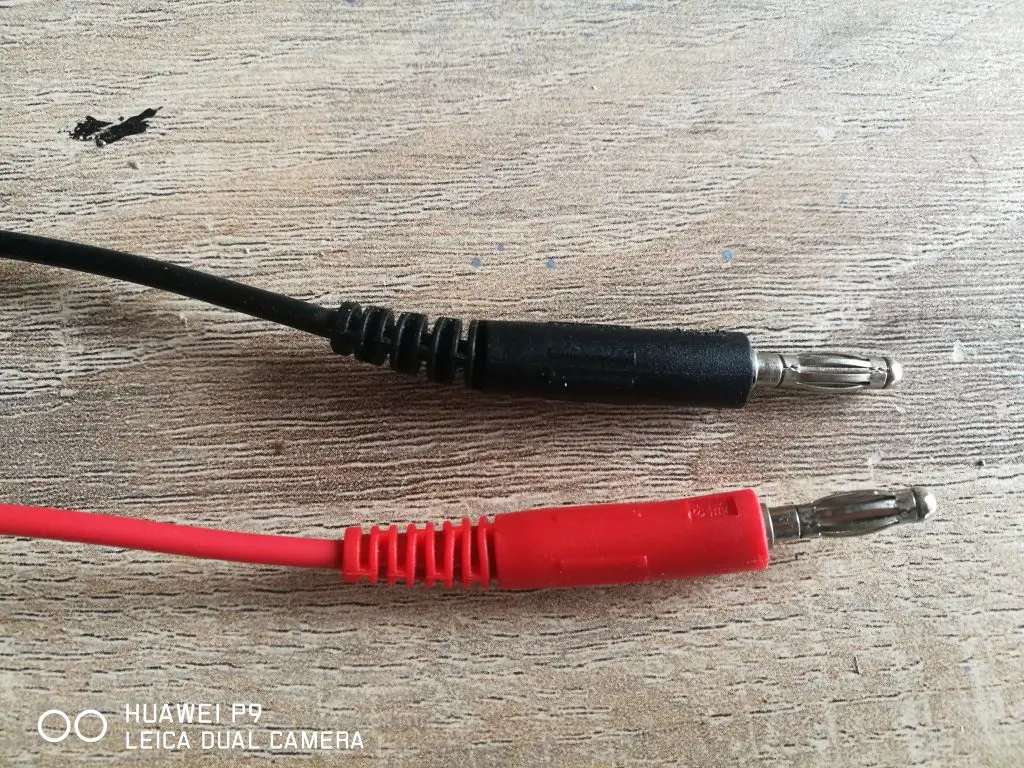
Cable
The cable is the part of the multimeter that bridges the gap between the plug and the probe. The cable can vary in length.
It lets you maneuver and position the probe as needed.
It would be quite annoying if you had to constantly carry the multimeter with you to each part of the circuit everytime you needed to test.
The cable (that varies in length) allows you to keep the multimeter in a stationary position while you can test different parts of a circuit.
Probe
I mentioned earlier that multimeter leads are like our hands. In that case the multimeter lead, the probe would be the fingers.
The probe is the part of the multimeter lead that makes contact with components, wires and different parts of a circuit.
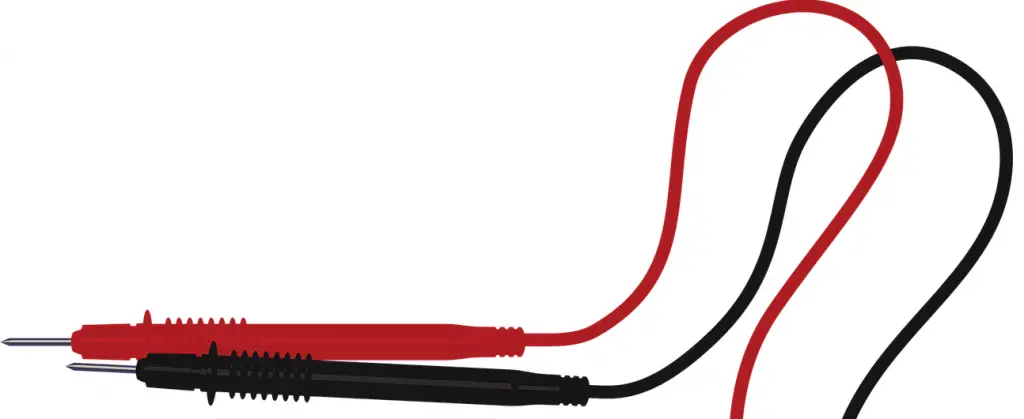
There are many different types of probes available for different applications. I will cover these later.
Insulation
The final section of a multimeter lead is the insulation.
Insulation is vital in electrical and electronic wires, as it protects you from currents and voltages. The insulation of multimeter leads is there for the same reason.
It covers all of the cable, and plug, and parts of the probe.
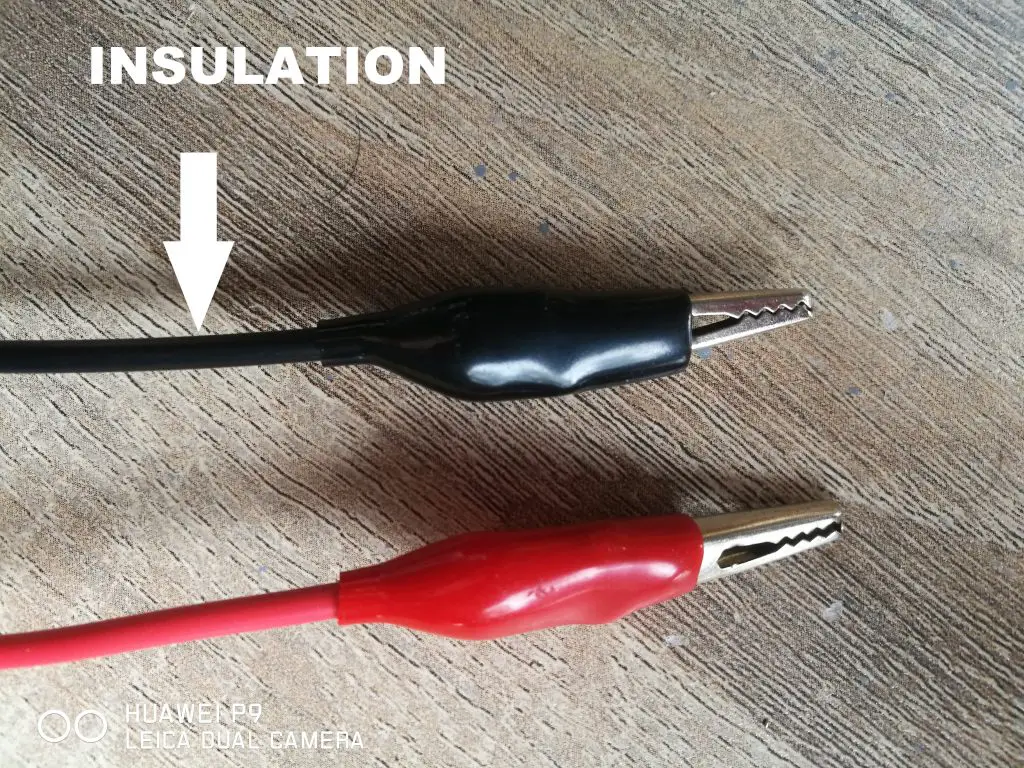
The most common insulating material used is silicone.
What are the different parts of the multimeter leads made of?
While the materials used for each part of the multimeter lead varies, they need to be constructed with materials that are capable of conducting electricity.
Metals are the best conductors of electricity and therefore are the go to when designing multimeter leads.
As well as the ability to conduct electricity, multimeter leads need to be able withstand high currents, voltages and temperatures.
The most common metal used for the cable is Copper, as it is a great conductor of electricity. One thing that needs to be taken into consideration when choosing a material for the cable is the resistance of the cable as it should not affect the current and voltages being tested.
A standard cable used for multimeter leads should not exceed 30 Mega Ohms.
The plug and probe consists of a metal plug/pin that is covered by insulation.
Different types of multimeter test lead extension
While the plug, and cable of a multimeter lead are standard and rarely vary, there are many different types of probes available.
Depending on what you are testing, rest assured there will be a probe available to make testing an easier process.
Apart from the standard probe, the ends of multimeter leads can be Alligator clips, and Banana Plugs among the most common of multimeter lead extensions.
Multimeter lead extensions #1 : Standard Probe
The first and most common extension for multimeter lead is the standard probe as pictured below.
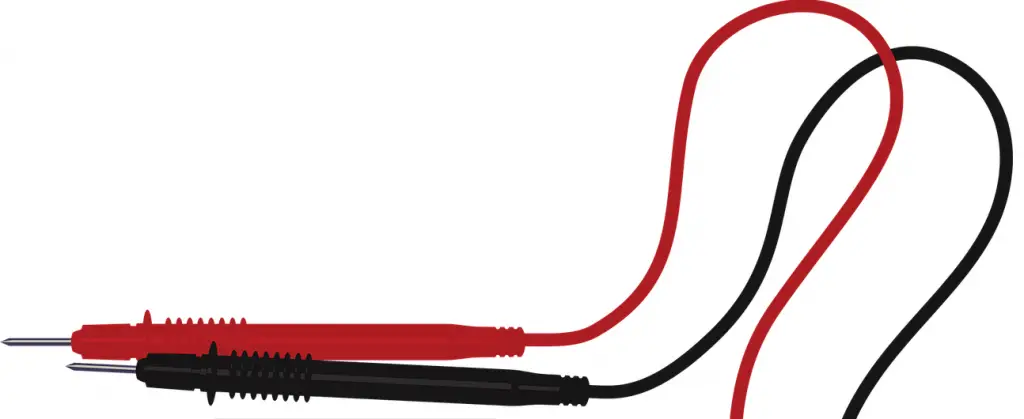
This type of probe is great for testing components of circuits on Printed Circuit Boards (PCB’s), or breadboards.
It is also great for testing Surface Mount Devices (SMD’s) which are harder to test with other multimeter lead extensions.
The long needle of the probe allows you to test hard to get places.
Multimeter lead extensions #2: Alligator Clips
Next on the list of multimeter lead extensions are Alligator Clips.
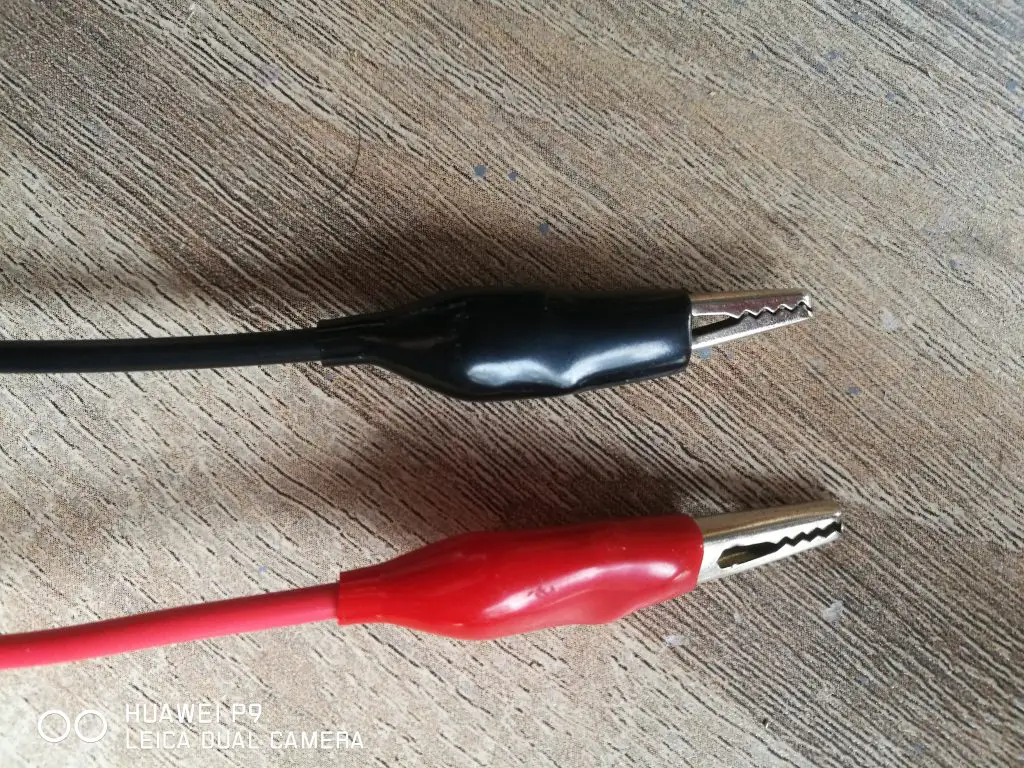
Testing wires or a component’s leads while holding probes can be quite cumbersome.
Alligator clips are perfect as they allow you to grab wires and leads of components making a secure connection.
This comes in handy when you need to connect the multimeter leads and do something else while testing. The alligator clips and remain to whatever you attached them to while you do whatever else you need to do.
Multimeter lead extensions #3: Banana Plugs
Number 3 of the list of common multimeter lead extensions are banana plugs.
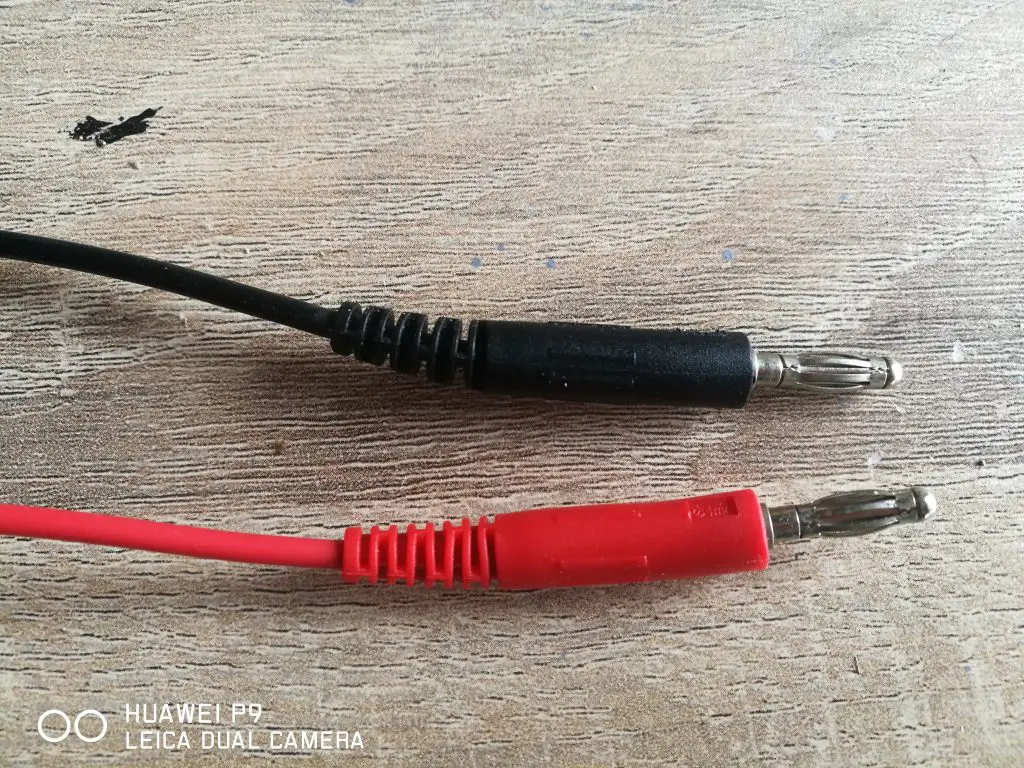
Some of the time you will need to test a circuit that isn’t exposed (you cannot see the circuit board, or get to it using probes or alligator clips).
Sometimes they will include a jack (or socket) as pictured below.
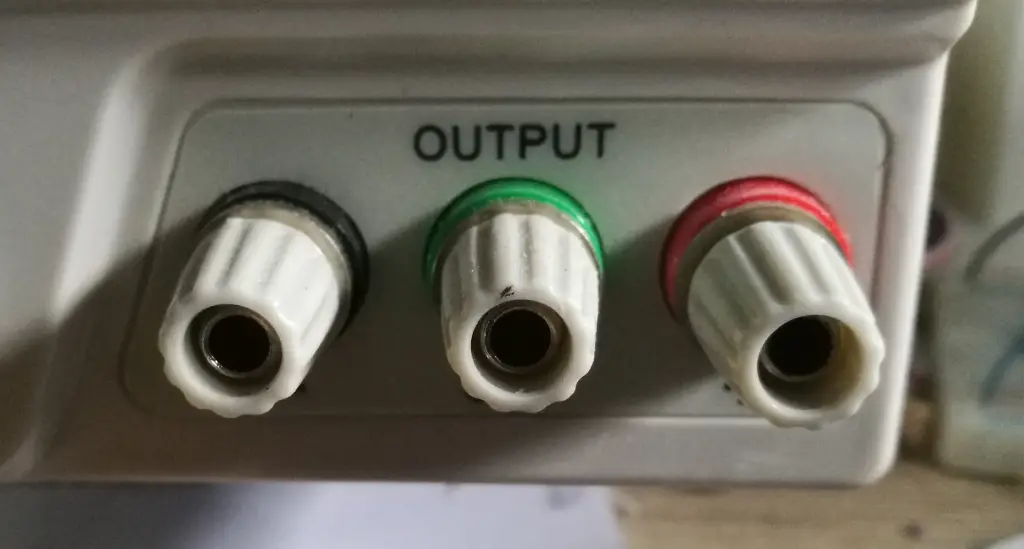
To be able to test a circuit with this configuration, you will need to use banana plugs.
Are all multimeter leads made the same?
Electrical and electronic applications vary in voltages and current. Electrical voltages can reach values up to 1000 volts, while electronic voltages can be as low as 1.2 volts.
So, due to this, multimeters are designed specifically to withstand voltages and currents they will be used in.
Multimeters are designed by manufacturer’s to comply with NFPA 70E category requirements (CAT ratings).
These ratings are location based, and determine which type of multimeter is suitable for the job.
Similarly, multimeter leads have to abide by these ratings.
So, multimeter leads will be designed accordingly for the application they will be used in, and given a CAT rating.
What application are multimeter leads used for?
As we saw above, the CAT rating of a multimeter will determine where it will be suitable to use.
Below is a table of different CAT ratings, and their applications of where they should be used.
| Overvoltage Category | In Brief | Examples |
| CAT IV | Three-phase at utility connection, any outdoor conductors | Refers to the “origin of installation,” i.e., where low-voltage connection is made to utility powerElectricity meters, primary overcurrent protection equipmentOutside and service entrance, service drop from pole to building, run between meter and panelOverhead line to detached building, underground line to well pump |
| CAT III | Three-phase distribution, including single-phase commercial lighting | Equipment in fixed installations, such as switchgear and polyphase motorsBus and feeder in industrial plantsFeeders and short branch circuits, distribution panel devicesLighting systems in larger buildingsAppliance outlets with short connections to service entrance |
| CAT II | Single-phase receptacle connected loads | Appliance, portable tools, and other similar household loadsOutlet and long branch circuitsOutlets at more than 10 meters (30 feet) from CAT III sourceOutlets at more than 20 meters (60 feet) from CAT IV source |
| CAT I | Electronic | Protected electronic equipmentEquipment connected to (source) circuits in which measures are taken to limit transient overvoltages to an approximately low levelAny high-voltage, low-energy source derived from a high-winding resistance transformer, such as the high-voltage section of a copier |
What is the best wire for multimeter test leads
While there isn’t a specific type of wire that is best for multimeter leads, choosing the right kind of cable that is suited for the application should be taken into consideration.
As you saw above, CAT ratings help you choose the right multimeter and test leads for the job at hand. Depending on what type of voltages and currents you are dealing with, you can choose the right multimeter lead.
The multimeter should be able to handle the voltages, currents and temperatures of the circuitry it is testing.
Are positive and negative multimeter leads made of the same material?
Testing electrical and electronic systems with a multimeter requires two multimeter leads. A Positive and Negative lead.
Since the voltages and currents will not vary across either of these multimeter leads, they are both made of the same material.
How to properly use multimeter leads
Using a multimeter and its leads can be a bit confusing when learning how to use them. But, with the right knowledge and practice, you will be able to troubleshoot circuits with no problem.
If you are just starting out, check out the video below on how to properly use a multimeter and its leads.
Can you make your own multimeter test leads?
Maybe you have misplaced your last set of multimeter leads and need to do some testing urgently. Is it possible to make your own multimeter test leads?
Yes! Below is a video on how to make your very own multimeter leads.

